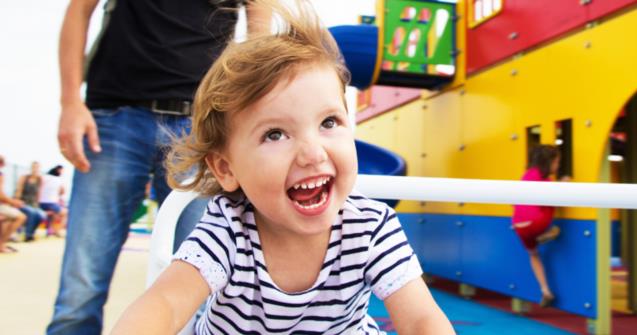
5 simple ways to intervene with a highly active child
Having an active or very active child in a daycare group is quite common. We can all agree that these children need to move. For some children, this need can go beyond what is “normal”. These children never seem to slow down or be tired. They are constantly moving full speed ahead. I know what I am talking about it. My son is one of these “highly active” children. Participating in sports represents one of his vital needs.
An active child requires special attention in a daycare group. If you are constantly asking him to “calm down”, you are acting against his need and sooner or later, you will most likely have to deal with a tantrum. Of course, negative interventions may follow. I’m not saying that an active child should be allowed to run, move, and jump non-stop. During the day, there are times when an active child will have to stop and calm down, for meals and cognitive activities for example. He must learn to be able to do so. However, I believe that certain interventions can help an active child be more “available” for moments when he needs to participate in more sedentary activities. Read on to discover five (5) simple yet efficient interventions that may be helpful when working with a highly active child.
Make sure the child has plenty of opportunities to be active
Daily, make sure children benefit from active play. Ideally, go outside and let them run around. On rainy days when you must stay inside, plan activities and exercises that will ensure children can still be active. Don’t forget that a highly active child’s need to expend energy is much greater than the need of the other children in your group. For a highly active child, enjoying sedentary activities all day long is extremely difficult if not impossible.
Weighted stuffed animals, interesting allies for calm activities
When your group must remain seated, set a weighted stuffed animal on the legs of a highly active child. The weight will help the child calm down and encourage him to remain seated.
Make the most of transitions
During transitions, explore different types of movement. Hop from one activity to the next, spin like a top to move from one area to another or encourage children to walk like different types of animals.
Encourage a highly active child to be your helper
A highly active child needs to move. Let him help you serve snacks or distribute utensils. Ask him to help you pick toys up off the floor. Involve him in as many daily tasks as possible to provide him with the opportunity to be active.
Take a good look at your schedule and adapt it
Be sure to alternate between sedentary activities and activities that make it possible for children to move around. This simple adjustment will be beneficial for both you and your group.
Keep in mind that “highly active” children have great potential. Yes, they can be demanding, but they are also highly curious, thoughtful, and creative.
Maude Dubé, Specialized educator

 Home
Home Theme activities
Theme activities
 Babies and toddlers
Babies and toddlers
 Arts and crafts
Arts and crafts
 Science
Science
 Creative recipes
Creative recipes
 Tips and tricks
Tips and tricks
 Special needs
Special needs
 Extra activities
Extra activities
 Educ-TV
Educ-TV
 Newsletter
Newsletter  Online store
Online store Educatall club
Educatall club

